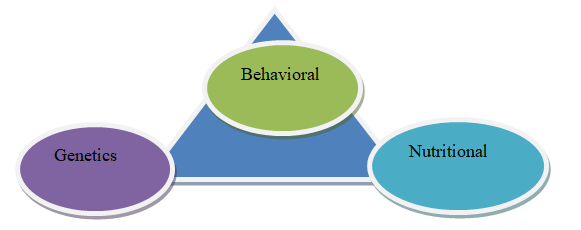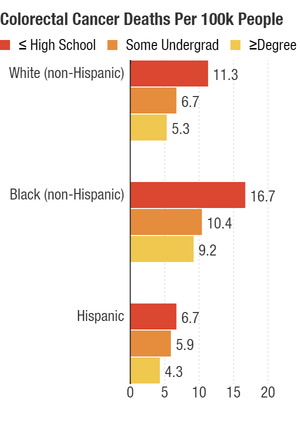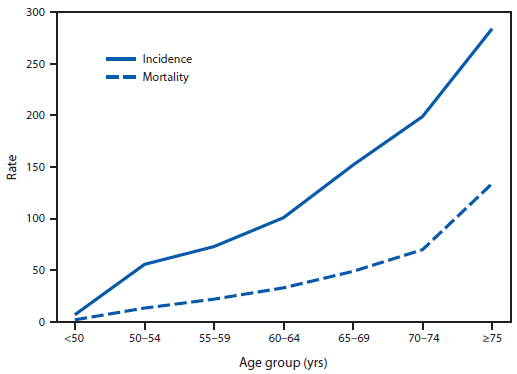Theoretical Framework
Colorectal cancer has become very common among the aging poor Americans, especially those who are above 50 years. In order to win the battle against colorectal cancer, Cassel (2003) says that the first step is to understand its possible causes. The framework below identifies some of the possible causes of colorectal cancer in the modern society. It also demonstrates how these factors are related from a theoretical perspective.

As shown in the above framework, one of the leading causes of colorectal cancer is the behavioral pattern that one assumes in his or her lifestyle. According to Cassel (2003), physical exercise is known to be one of the factors that may help in suppressing this disease. It explains why this type of cancer is very common among the elderly.
People of this age tend to be inactive, especially after their retirement. Once a body that was active before is subjected to minimal activity, then the risk of developing malignant epithelial tumor becomes high (Austin, Henley, Richardson & Eheman, 2014). Behavioral factors can be addressed if the affected person is willing to change as discussed in the next section.
According to Austin, Henley, Richardson, and Eheman (2014), colorectal cancer may also be related to the genetics of a person. People that have close relations who suffered or is suffering from this disease have high chances of acquiring it. This is specifically so if the parents were once affected by this disease. The third factor is on nutritional issues.
The type of food that one takes may influence the possibility of acquiring colorectal cancer. According to Calviello and Serini (2010), excessive fat in the body may be a causative factor. Some foods such as pumpkin seeds are known to help in fighting this disease. It is clear that the choice of food may heavily influence the possibility of one acquiring this type of cancer. These three factors work together in defining the possibility of one acquiring colorectal cancer.
An individual who engages in heavy physical activities may not be affected much by intake of fatty foods because the fat will be burnt to produce energy. On the other hand, a person with genetic issues about cancer may increase chances of acquiring this disease in case he practices poor nutrition and avoids physical exercises.
Review of the Literature and Data Explanation of the Phenomenon
The recent research shows that colorectal cancer is becoming prevalent among the poor less educated members of the American society (Annemans, 2008). The scholar says that this type of cancer is one of deadliest diseases in the United States today. In the past, colorectal cancer was common among the aging rich Americans. However, the trend is slowly changing, and the disease is becoming more prevalent among the poor and less educated Americans.
It is important to address this problem in order to reduce the rate of deaths, especially among the aging people. The United States’ government is collaborating with other non-governmental agencies in order to find a lasting solution for this problem. The figure below shows the statistics from a study that was recently conducted across the American population.

According to the statistics, it was determined that colorectal cancer is more common among the African Americans than any other race in this country. Cassel (2003) explains that this has nothing to do with the skin color. The reason behind this is the poverty levels, which is high among the African Americans.
The poor may not have easy access to the medical facilities that may help in early detection of this disease. This is the principal reason why they are heavily affected. The statistics show that the higher the level of education, the lower the chances of having this cancer. The figure below shows that age has an impact on rate of prevalence of this disease.

As shown in the figure above, people above 50 years have greater chances of developing colorectal cancer than the younger generation. The risk becomes higher as one gets older.
Synthesis and Analysis of Literature
It is clear from the above analysis that colorectal cancer has become a major issue of concern in the current society. The literatures reviewed in this study reveals that the aging population is at greater risk of suffering from this disease. Youngberg (2013) reiterates on what the scholars say concerning the need to make a concerted effort among all the stakeholders in order to succeed in reducing colorectal cancer death rates in this country.
Potential Interventions
According to the principles defined in Healthy People 2020 policy, it is important to fight this disease in order to eliminate or reduce deaths associated to it. As discussed above, the best remedy is early detection followed by proper medication. The society should be educated on how to detect this disease as early as possible.
They should also understand the need to seek immediate medical attention whenever they suspect any abnormality in their colon. The society should be advised on issues about nutrition and physical exercise as some of the ways that can be used to fight this disease.
References
Annemans, L. (2008). Health Economics for Non-economists: An Introduction to the Concepts, Methods and Pitfalls of Health Economic Evaluations. New York: Academia Pr Scientific Publishers.
Austin, H., Henley, S., Richardson, L., & Eheman, C. (2014). Changes in Colorectal Cancer Incidence Rates in Young and Older Adults in the United States: What Does it Tell us About Screening? Cancer Causes Control, 25(2), 191-201.
Calviello, G., & Serini, S. (2010). Dietary omega-3 polyunsaturated fatty acids and cancer. Dordrecht: Springer.
Cassel, C. K. (2003). Geriatric medicine. New York: Springer.
Jeffreys, M. R. (2010). Teaching cultural competence in nursing and health care: Inquiry, action, and innovation. New York: Springer Publishers.
Youngberg, B. (2013). Patient safety handbook. Burlington: Jones & Bartlett Learning.
